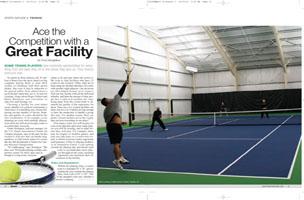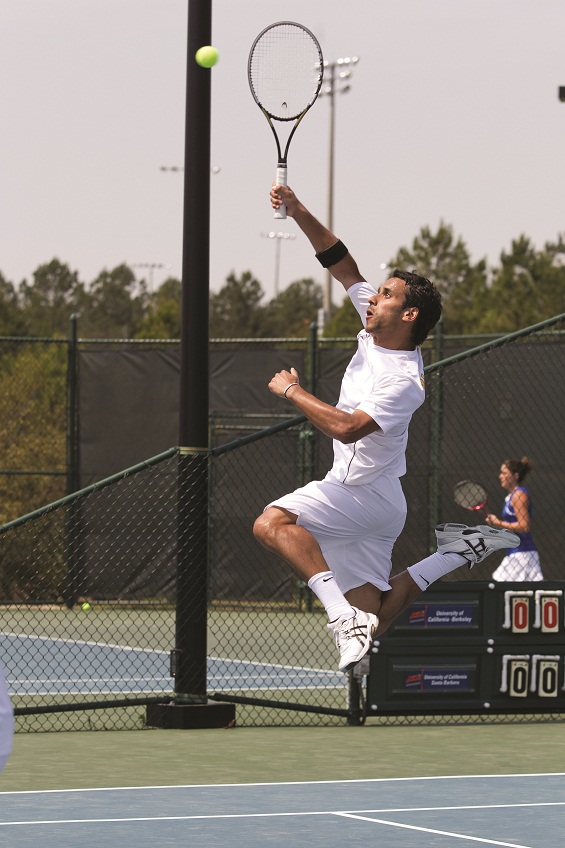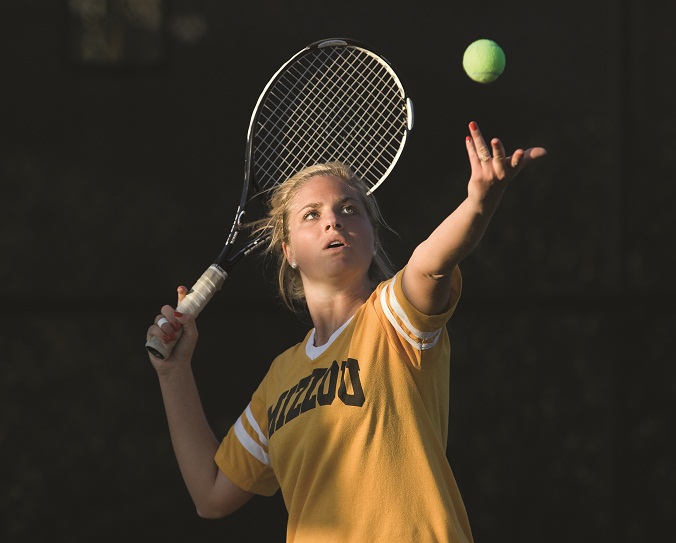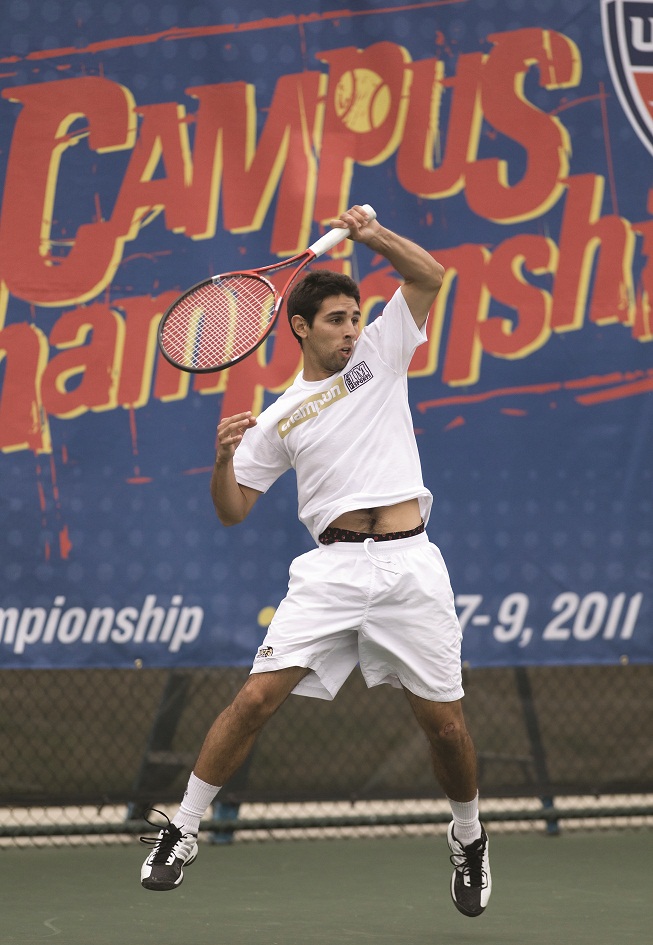
Some tennis players have corporate sponsorships for everything from the balls they hit to the shoes they lace up.
Then there's everyone else. As much as these players (all 30 million of them) love the sport, there's no big company paying them to wear their clothes or rehydrate with their sports drinks. But even if they're unknown to the general public, those players know a good facility when they see it. So just for a minute, forget about Roger Federer and Maria Sharapova, and concentrate on Jane Doe and Average Joe.
|
Photo courtesy of Atlas Track & Tennis, Tualatin, OR |
Choosing a facility for your tennis event, whether it's a juniors tournament, a fund raiser or something else, means balancing out any number of factors. Number and quality of courts should be the first consideration. If, for example, you're planning an event with multiple players, your ideal site will need enough courts to accommodate everyone.
Glenn Arrington, national manager for the U.S. Tennis Association's Tennis On Campus program, says in the past, he has worked to find sites that can handle large numbers of club tennis teams for events like the Fall Invitational or Tennis On Campus National Championship.
"It's challenging," says Arrington. "We have over 500 people playing socially competitive tennis for three days and although it's a big event, everyone wants to be and stay where the action is. We look to find facilities that have 32 courts in one location. Often, what we've been using are facilities that have 24 courts, with another eight adjacent. Our decisions are often shaped because we're trying to find one key facility with all the bells and whistles, and limit the amount of time people have to play at an ancillary site, since being away from the crowd tends to diminish the quality of the experience for them. There are a lot of great facilities out there, but not a lot of places are big enough or have the manpower to handle a group this size. For smaller events, there are plenty of tennis facilities across the country that can host everything in one place."
How many courts you will require for your event depends upon how many players you will be hosting, and in what format they will play. For example, there may be singles or doubles games, and play may take place in a round-robin format, in which everyone rotates opponents (and partners, if they're playing doubles) or an elimination format. Court lighting extends the playing day, and allows each court to accommodate more players throughout the event, meaning organizers can maximize their investment in the facility.
Rules and regulations
Within the playing lines, a tennis court is a standard 36' x 78', and including the area outside the playing lines, each court is 60' x 120'. This is the standard court size, whether a person is playing recreational tennis in a municipal park, or championship tennis at the U.S. Open in Flushing, New York ; however, courts that are built for those higher levels of competition have more space outside the playing area to accommodate line judges, umpires, etc. Rules also govern the net height and more; check to make sure your facility complies with all specifications.
On the surface
Next, consider the types of courts available. Tennis courts are commonly classified into two types of surfaces: hard courts and soft courts. Hard courts include asphalt or concrete courts surfaced with acrylic coatings or covered with sheet or roll goods, or with modular surfaces. A hard court may be covered with a cushioned, or resilient, material, which gives it a slightly more bouncy feel during play. Soft courts include clay, fast-dry, grass and synthetic turf, and are generally considered easier on players' back, feet and legs, as well as being cooler during hot weather.
|
Photo courtesy of Camerawork USA |
The choice of surface should be dictated by a variety of considerations: the facilities available, player preferences and needs, budgetary considerations and availability of maintenance personnel (since, for example, clay and fast-dry courts need to be brushed after each match, and fast-dry courts require daily watering to keep them in condition). Above all, a facility should be well-maintained, safe and consistently playable.
"We look for a variety of resources available," says Arrington, "including the conditions of the courts and nets, whether or not they have adequate lighting, and whether or not they have good viewing and seating."
Other amenities to look for include a pro shop (an on-site racquet stringer can be very valuable to players who break a string in the heat of competition, or who find themselves in need of extra clothing or equipment), concessions, rest rooms, lockers and space for vendors or others.
|
Photo courtesy of Camerawork USA |
Different players, different facilities
Then there's your clientele to consider. "We always look for some place with good proximity to a decent-sized airport, a place that has accommodations nearby with reasonable rates, since we cater to college kids," says Arrington. "There are a lot of phenomenal tennis facilities out there, but sometimes, because of location and market costs, they're more suited to events that have different player demographics, like adult league players or seniors."
Working with a local CVB, he adds, "can create good synergy" and help planners locate options in their chosen cities.
Kids' stuff
Planning an event for the 10-and-under crowd? It's a whole new ball game these days. Times, were, kids learned to play tennis on the same courts adults use. These days, many teaching pros are likely to use the USTA's game plan for 10 and Under Tennis, utilizing what is known as the QuickStart Tennis Format (QST for short). The new format uses shorter courts, lower nets and low-compression balls, making it easier for children to pick up the skills. Temporary short courts can be set up on regular facilities.
|
Photo courtesy of Camerawork USA |
Many tennis centers already feature designated 10 and Under courts, or else have regular courts with different colored playing lines delineating adult and children's boundaries. Information on QST and equipment is available through the USTA (www.usta.com).
Wheelchair tennis
If your event will host wheelchair tennis play, make sure it's accessible. According to Jeremiah Yolkut of the USTA's Competitive Play and Technical Programs division, "While it's standard for many facilities to have 42" wide gates, you want to have a wider opening for players in wheelchairs because of what we call the camber, or the angle in the wheels that you'll see in an athletic wheelchair. If your gate has a 48" wide opening, you don't have to take a wheel off the chair to get it through the gate." Wheelchair tennis tends to attract spectators who may have mobility limitations; seating and conveniences should be accessible.
Things to remember
All athletic events require planning. Don't overlook the basics including permitting and insurance (for all activities), transportation (players and spectators, if necessary) and permission/sanctions from any applicable governing body. If your event will require officials, reserve their time in advance. The local community tennis association or the appropriate section of the USTA can help point you in the right direction, as can the local CVB.
It's your event. Hit a winner.





